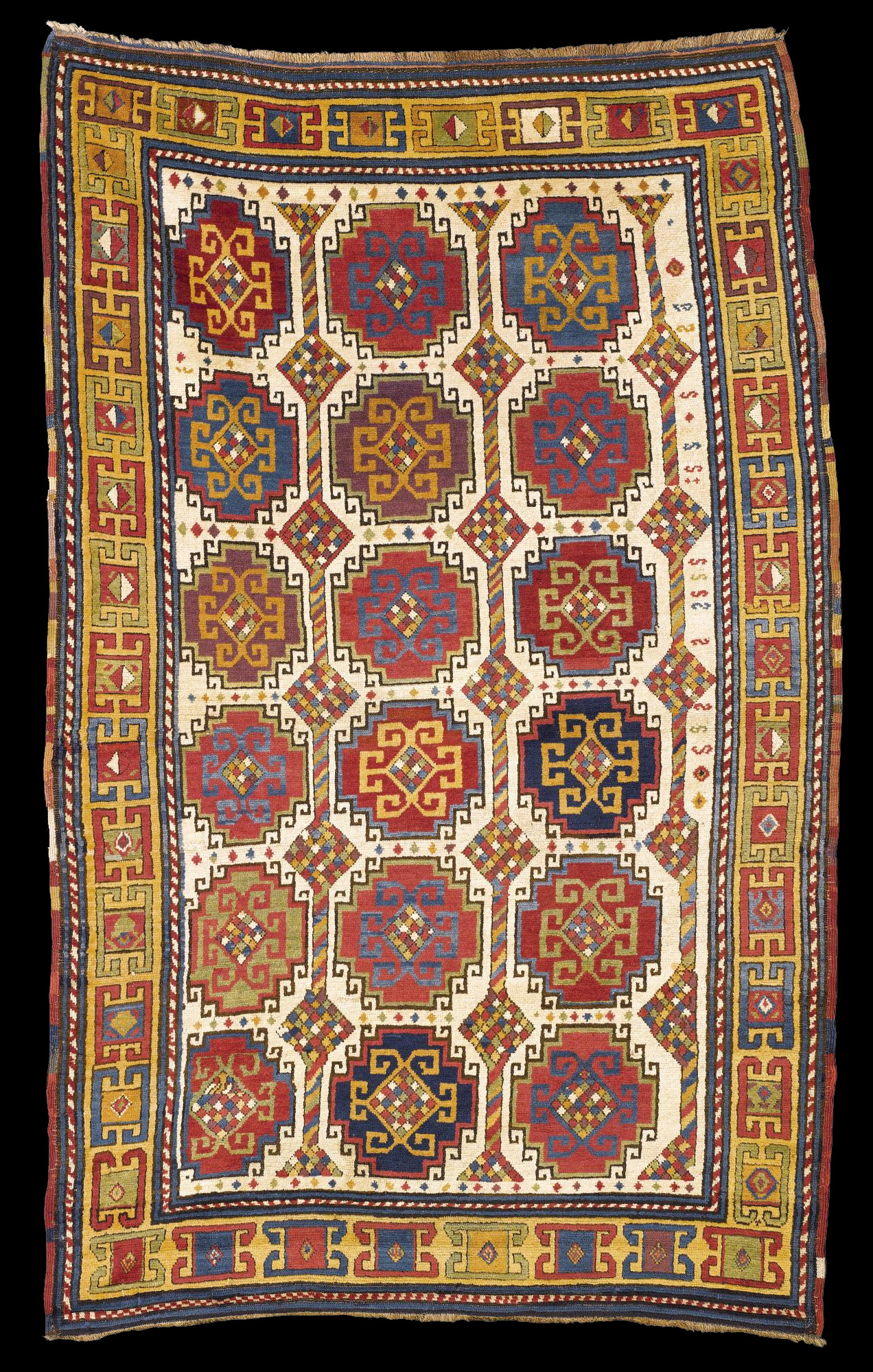|

Sotheby's Carpets
New York | 16 Dec 2009, 10:00 AM | N08597
LOT 43
PROPERTY OF AN AMERICAN COLLECTOR
A MOGHAN KAZAK RUG, SOUTH CAUCASUS
Warp: wool, Z2S, natural ivory and brown twist
Weft: wool, Z spun, natural ivory, 3 to 5 shoots
Pile: wool, symmetric knot
Density: 7-8 horizontal, 7-8 vertical
Sides: 4 cords of 2 warps wrapped in multicolored woolsEnds: upper with
later macrame cable; lower with 1/8 to 1/4 inch blue kilim
Colors: madder red, rose red, deep blue, mid-blue, light blue, green,
aubergine, yellow,
ochre, ivory, walnut
approximately 7ft. 6in. by 4ft. 7in. (2.29 by 1.40m.)
mid-19th century
ESTIMATE 30,000-40,000 USD
Lot Sold: 46,875 USD
EXHIBITED: Divine Images and Magic Carpets: from the Asian Art Collection
of Dr and Mrs William T. Price, Amarillo Art Center,
April 18-May 31, 1987
LITERATURE
Jerry A. Schefcik et al, Divine Images and Magic Carpets: from the Asian
Art Collection of Dr and Mrs William T.
Price, Amarillo, Texas, 1987, pl. 22
CATALOGUE NOTE
The design here of hooked, stepped "Memling" guls supported by diagonally
striped columns punctuated by diamonds
is shared with Moghan weavings such as the Ritman long rug, sold Sotheby's
London, 18 October 1995, lot 41; a rug
published by Eberhart Herrmann, Asistische Teppich-und Textilkunst, v. 3,
Munich, 1991, pl. 33; another in Heinrich
Kirchheim et al., Orient Stars, Stuttgart and London, 1993, p. 15, p. 49;
and one in James D. Burns, The Caucasus:
Traditions in Weaving, Seattle, 1987, pl. 30. Here, as in the Burns,
Ritman and Kirchheim pieces, the ivory ground is
a perfect foil for the brilliant and varied colors employed in the design.
The yellow border of the present rug is shared
with the Kirchheim example, however, its hooked design motifs differ from
the examples cited and are found in other
Kazak rugs, such as Eberhart Herrmann, Kaukasische Teppichkunst, Munich,
1993, pl. 40. In near original condition,
the present rug exhibits the lustrous wool and brilliant color that
characterize the best Caucasian weavings. |

